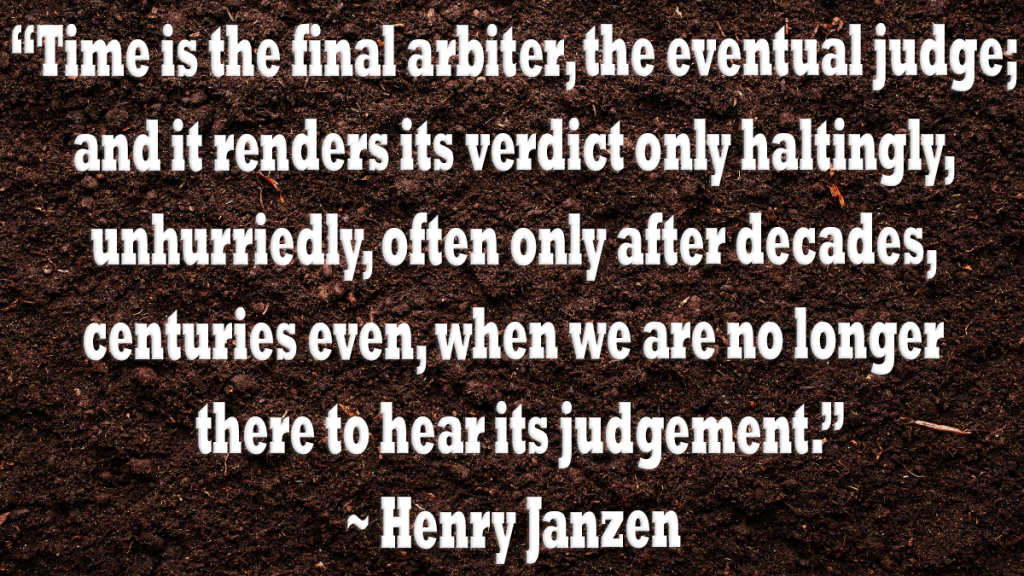Have you ever matched a paint sample to an older color? Paint stores keep quite a variety of color samples. Crop scientists keep seeds in seed banks for comparison and research. Soil scientists do the same with soil samples, stored in archives.
Soil changes with time. In fact, soil is a dynamic source of nutrients, stability, and life. But changes in some soil properties can be slow, requiring decades or even centuries before differences can be detected. This is where soil archives can help. Soil archives provide ‘time capsules’ for determining how soil changes over time.
Archived soil samples are also particularly valuable as references. As new analytical capabilities and research questions form, the stable materials in soil archives help researchers because their characteristics are known.
A soil archive located in North Dakota has provided scientists an opportunity to embark on research that would be impossible without the foresight of Howard Haas. Dr. Haas led an ambitious project in the 1940s to understand soil change throughout the Great Plains. The 1940s were a time of great changes in agriculture. They brought forth the advent of hybrid crop varieties, increased mechanization, and greater use of nutrient inputs such as nitrogen. How did this drastic change in agricultural practices impact soils?

First, some basics!
The soil archive used for the investigation is based at the USDA-ARS Northern Great Plains Research Laboratory near Mandan, North Dakota. Over 5,000 soil samples are included in the archive. The project led by Dr. Haas studied soil carbon and nitrogen changes following the conversion of native grassland to cropland. That project included seventeen locations across nine states in the Great Plains.
Because of the long-term nature of soil science research, maintaining samples in archives is important. Long-term studies about sustainable practices occur over many decades. As a comparison, it can take crop breeders two decades to develop a new variety ready for the marketplace.
Keeping soil samples preserved to study changes over time is crucial to determining sustainable practices. And that is precisely what Dr. Haas did, starting three-quarters of a century ago.
Despite their potentially valuable role as an important part of long-term research, soil archives are rare. Resource challenges associated with establishing and maintaining soil archives are substantial. Research institutions that hold them must make lasting commitments to storage space and personnel time to preserve archives for future use.
In addition to these challenges, identifying the original sampling location of archived soils can be difficult. Today, the locations of soil samples are frequently collected and marked with GPS coordinates. Dr. Haas and his teammates didn’t have GPS. This limitation required investigators to rely on field notes, maps, and soil descriptions to help identify previous sampling locations.

New insights from the soil archive
Today’s consortium of federal and university scientists is using the “Haas archive” to answer current research questions on soils. They also use it to collect data that will likely help answer future questions. They are investigating long-term soil change under dryland cropping at three locations in the Great Plains.
The project was originally started to study antibiotic resistance over time. It has since expanded into a broad evaluation of changes in soil physical, chemical, and biochemical attributes of the soils between Dr. Haas’ 1947 collection and resampling in 2018.
Of the original seventeen locations sampled by Dr. Haas, the team is investigating soil change in Montana, Colorado, and Texas. Though analyses are ongoing, preliminary findings have already identified important changes in soil properties, some of which are unexpected. The team has also experienced some unique challenges. One in particular is in recovering DNA from the soil – from decayed organic matter, dead microbes, insect parts – you name it!
Once completed, the investigation will provide an improved understanding of long-term changes in soil properties under dryland cropping in the Great Plains. This information can be used to determine best practices of resilient agroecosystems that meet the challenges of the 21st century. Resampling in another 71 years – 2089 – will reveal additional insights to the future generation of soil scientists and the public they serve.

The importance of long-term research
Long-term studies, enabled by the work of previous generations, help today’s scientists understand impacts of practices over time. This helps inform us whether agricultural practices are truly sustainable, and to identify how long before certain practices incur harmful or beneficial changes in soils. Making those observations, however, takes time.
Tradeoffs and synergies among ecosystem services are rarely resolved in the short-term. It can take decades before definitive answers are found. This can be a dilemma, as investigations may extend well past one’s career or even lifetime. Also, sometimes it is not possible to know what future research questions or measurement capabilities might be.
Time, as so eloquently shared by Henry Janzen in 2016, is perhaps the most vexing variable in our understanding agroecosystem change. Soil archives can help address the challenge of time.
Answered by Mark Liebig, USDA-ARS with contributions by Andrea Clemensen, Lisa Durso, Jay Halvorson, Andrew Margenot, Catherine Stewart, and Scott van Pelt. Dr. Liebig and others presented preliminary findings from the investigation at the ASA-CSSA-SSSA annual meeting: Long-Term Soil Change in Semi-Arid Dryland Cropping Systems
To receive notices about future blogs, be sure to subscribe to Soils Matter by clicking on the Follow button on the upper right! Explore more on our webpage About Soils. There you will find more information about Soil Basics, Community Gardens, Green Infrastructure, Green Roofs, Soil Contaminants, materials for Teachers and more.

On Sat, May 1, 2021 at 1:01 AM Soils Matter, Get the Scoop! wrote:
> soilsmatter2011 posted: ” Have you ever matched a paint sample to an older > color? Paint stores keep quite a variety of color samples. Crop scientists > keep seeds in seed banks for comparison and research. Soil scientists do > the same with soil samples, stored in archives. Soil c” >